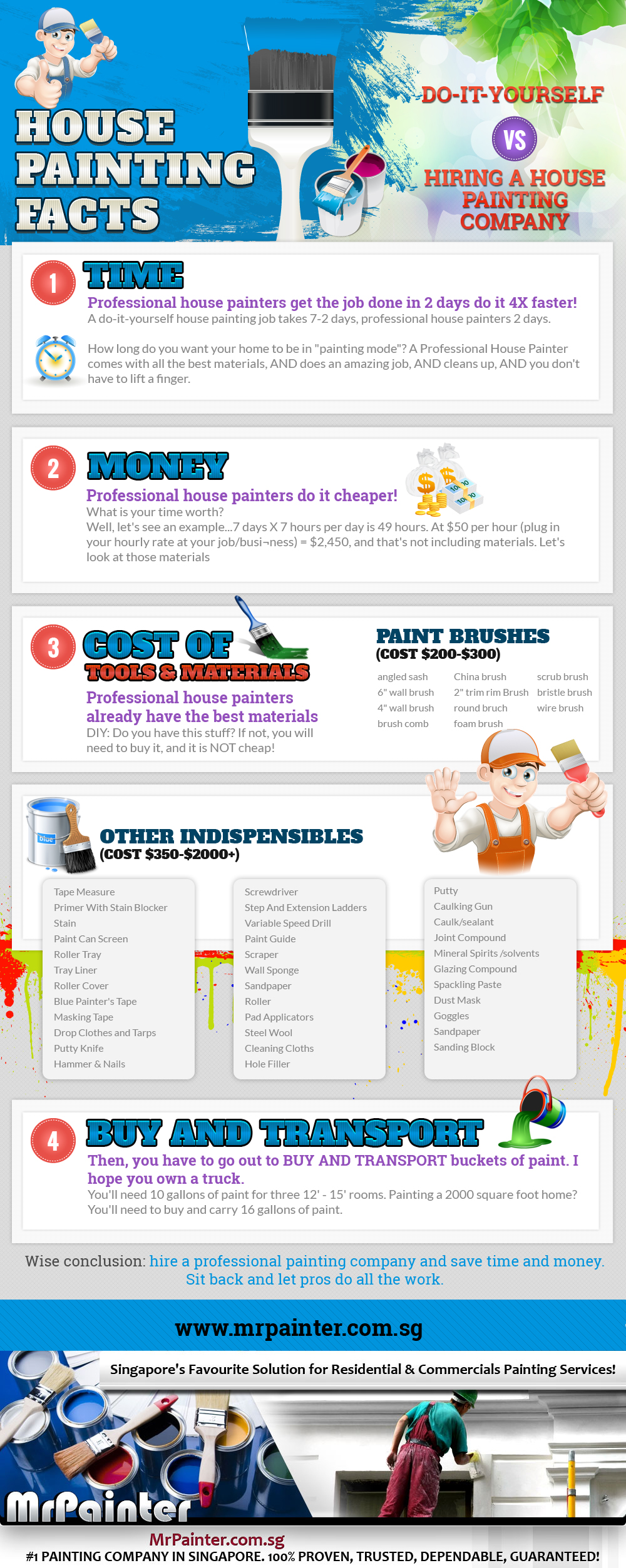Seasonal Factors In Industrial Exterior Paint: Key Insights You Should Understand
Seasonal Factors In Industrial Exterior Paint: Key Insights You Should Understand
Blog Article
Uploaded By-Doherty Bagger
When you're planning a business external painting task, seasonal elements can make or damage your outcomes. click here 'll wish to think about just how temperature and humidity impact paint application and drying times. Picking the appropriate season can guarantee your paint sticks effectively and lasts much longer. However which periods are absolutely the most effective for this sort of job? Let's explore the key elements that can affect your job's success.
The Effect of Temperature on Paint Application
When you're planning a business outside paint task, the temperature level can dramatically impact just how well the paint sticks and dries out.
Preferably, you want to repaint when temperatures vary in between 50 ° F and 85 ° F. If it's as well cold, the paint may not treat effectively, resulting in problems like peeling off or breaking.
On the other hand, if it's too hot, the paint can dry as well promptly, preventing correct adhesion and causing an irregular finish.
You must likewise consider the moment of day; early morning or late afternoon uses cooler temperatures, which can be much more positive.
Constantly inspect the manufacturer's referrals for the certain paint you're making use of, as they commonly provide assistance on the suitable temperature level range for optimum results.
Humidity and Its Result on Drying Times
Temperature isn't the only environmental factor that influences your commercial outside paint task; humidity plays a substantial function also. High humidity degrees can decrease drying out times significantly, impacting the general top quality of your paint task.
When the air is saturated with wetness, the paint takes longer to cure, which can bring about concerns like bad bond and a greater risk of mold growth. If you're repainting on a particularly humid day, be planned for extended wait times in between layers.
It's essential to monitor local weather and strategy accordingly. Ideally, go for humidity levels in between 40% and 70% for optimum drying.
Maintaining commercial interior painter twin cities in mind guarantees your task stays on track and supplies an enduring finish.
Best Seasons for Commercial Outside Painting Projects
What's the very best time of year for your industrial outside painting jobs?
Springtime and early autumn are commonly your best choices. Throughout these periods, temperature levels are moderate, and moisture levels are often lower, producing perfect conditions for paint application and drying.
Stay clear of summertime's intense heat, which can trigger paint to completely dry also quickly, causing inadequate bond and finish. In a similar way, winter months's cool temperature levels can prevent correct drying out and curing, running the risk of the longevity of your paint task.
Go for days with temperatures between 50 ° F and 85 ° F for optimum outcomes. Remember to inspect the regional weather prediction for rain, as wet problems can ruin your project.
Preparation around these factors ensures your paint task runs efficiently and lasts much longer.
Conclusion
In conclusion, intending your business outside painting projects around seasonal factors to consider can make a significant difference in the result. By organizing work throughout the ideal temperature levels and humidity degrees, you'll ensure far better bond and drying times. Keep in mind to watch on neighborhood weather report and choose the right time of year-- springtime and early autumn are your best options. Taking these actions will aid you attain a sturdy and expert coating that lasts.
